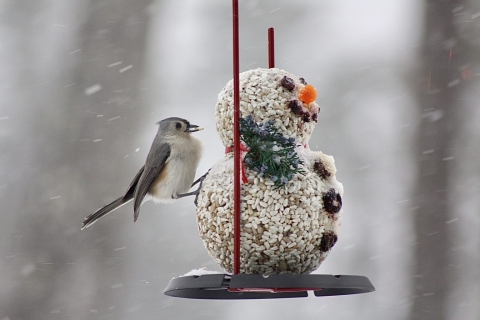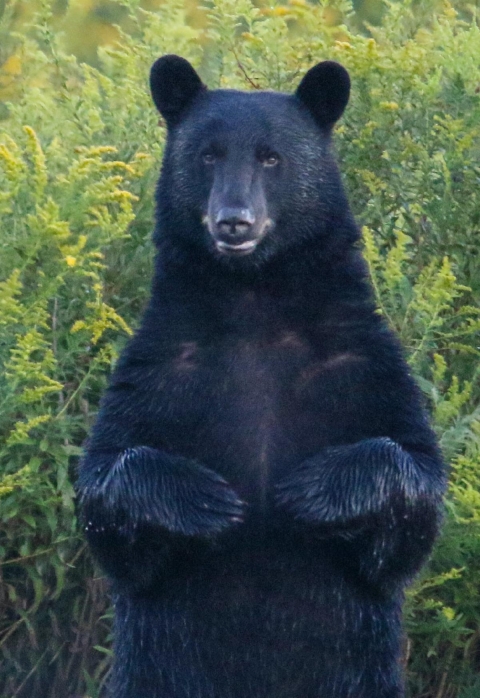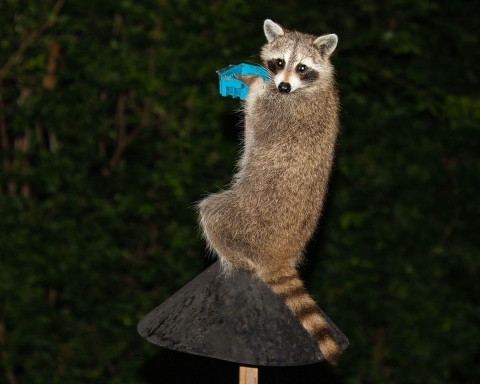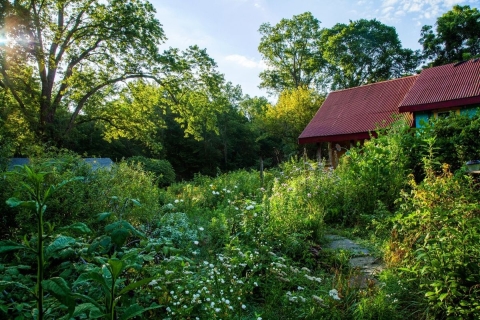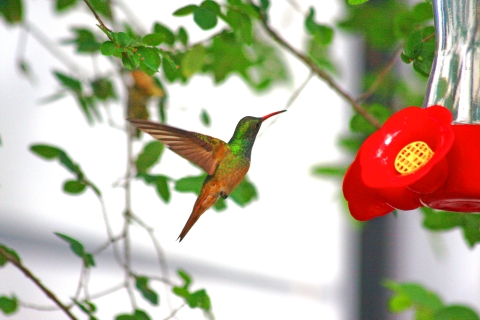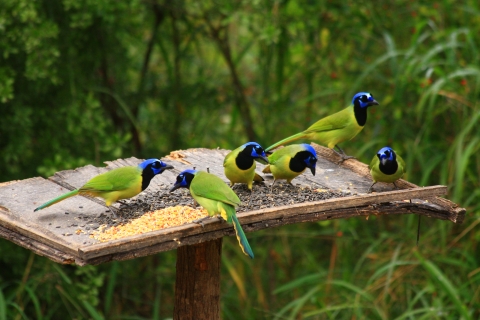Do you feed birds in your yard? Welcome to the club!
Some 59 million Americans do the same, for the thrill of seeing cardinals, woodpeckers and nuthatches up close, right outside their windows. Feeding wild birds has been an American tradition for more than 100 years.
In 2020, during the first months of the Covid pandemic, participation soared. With people largely stuck at home, bird seed and feeders flew off shelves.
There’s just one problem for bird lovers: how to square the popular practice with conservation ethics.
Wait a minute. Translate please. Are you saying feeding birds raises ethical questions?
Bingo. You’ve got it.
Hmmm. Why is that?
In general, it’s bad practice to feed wild animals. That’s because teaching wild animals to associate humans with handouts can lead to problems. Think: “bad” bears at campsites; alligators stalking people. And the danger is not just to humans. Supplemental feeding can cause digestive problems for some animals (deer and rabbits, for example) and alter normal behaviors.
Yeah, okay. I get it. But these are birds, not bears. What’s the harm in my helping birds get through winter?
Um, uh, well, the truth is: That depends.
Depends on what?
On whom you ask. And how you feed them. Because if you are going to feed wild birds, following a few tips can help you reduce the risks to birds. More on that in a moment.
Risks? What kinds of risks does backyard feeding pose to birds?
So glad you asked. The Big Three are: Disease. Predation. Collision. Drawing birds into close contact on shared surfaces makes it easy for them to spread bacteria like salmonella and E. coli. Luring them to the same place on a predictable schedule makes them more vulnerable to predators, like cats and hawks. Some birds may accidentally smash into glass windows near feeders. With wild bird numbers down by almost one-third since 1970, according to research in the journal Science, we don’t want to add to these risks.
Hey, life ain’t easy in the natural world. You say those are the big risks tied to feeders. Are there more?
Feeding can change bird behavior. Cardinals and Carolina wrens have extended their range north, partly as a result of feeders, research suggests. Some normally migratory hawks opt to stay put because birds at feeders provide enough prey. A few studies have linked bird feeding to lower egg production and hatching success — exactly why is not clear. Also worth noting: The birds that most aggressively swarm your feeder — house sparrows — are not the species that most need help.
Yikes. Does feeding birds also provide any benefits?
To us or to the birds? (Ba-da-boom) You bet, either way.
For birds, feeders can aid survival during migration and harsh winters, some studies show. And some bird lovers reason that feeding birds may help offset the harm we’ve done them by turning woods and meadows into lawns and shopping malls.
As to the benefits for us humans, consider the view of Paul Baicich, co-author of "Feeding Wild Birds in America: Culture, Commerce and Conservation," published in 2015. “There’s nothing wrong with bird-feeding,” Baicich writes. “It’s wonderful. It introduces people to nature — in their backyard. It’s the intermediate step between sitting around the house and actually going out to a national wildlife refuge national wildlife refuge
A national wildlife refuge is typically a contiguous area of land and water managed by the U.S. Fish and Wildlife Service for the conservation and, where appropriate, restoration of fish, wildlife and plant resources and their habitats for the benefit of present and future generations of Americans.
Learn more about national wildlife refuge .” He adds: “The birds don’t need the feeders. We do.”
OK, sold. Case closed. Who could argue with that?
People who worry there’s too little data on how the pros stack up against the cons.
When birds mix at feeders, they’re not super neat. Along with birdseed, they also pick up and share bacteria and waste. Across the country, feeders have helped spread conjunctivitis in house finches; the eye disease impairs their vision, making it hard for them to detect predators and feed.
Sam Droege is one such contrarian. He’s a wildlife biologist for the U.S. Geological Survey, based at Patuxent Research Refuge in Maryland. Droege feeds birds, but not the way most people do.
“It is hard to ecologically justify removing native habitat to create a house and lawn, and then putting up feeders filled with bird seed,” argues Droege “It’s ironic, really.” Especially, he says, because it takes hundreds of thousands more acres of “ground-up prairie and swampland” to produce that bird seed.
Instead, Droege uprooted his lawn and planted his suburban yard with “very seedy things that goldfinches love like wingstem and perennial sunflowers. Winter sparrows and cardinals work over seeds from … asters, goldenrods and brown-eyed Susans. Fruit lovers like catbirds, thrashers, and mockingbirds are in on chokeberry, sumacs and spicebush.” On top of that, Droege’s garden offers birds lots of insects and nesting cover.
Very impressive. But realistically, how many people can go that far?
If you have a yard, start small, says Droege. “Yard treatments can be as simple as not mowing sections of the yard or, better, mowing them once a year; leaving neat and tidy borders where the public demands such. From there it can expand to collecting plants from neighbors and friends who can divide their plants during spring and fall.”
Hold the phone. Don’t some national wildlife refuges have bird feeding stations? What’s the rationale for that?
You’re right. They do. Santa Ana National Wildlife Refuge in Texas, for example, has an area in the back of the visitor center “where visitors can sit and watch the birds indoors while they have coffee and a snack,” says outdoor recreation planner Christine Donald. The feeding station is “very popular with visitors who cannot walk far and want to see a variety of birds,” says Donald. “Families, school groups, Winter Texans and even birders also come in to see what is on the feeders.”
Like many refuge feeding stations, Santa Ana’s incorporates native plants that provide seeds, nectar and berries favored by local and migrant bird species. Feeding is seasonal only. Retaining or restoring the original bird habitat would be the best for birds, says Donald. But where habitat has been lost, feeding stations help provide food opportunities along migratory routes, in keeping with longstanding Refuge System practice.
Okay, let’s say I want to keep feeding birds because it brings me so much joy. But I don’t want to harm them. What can I do?
You can minimize the harm to birds by following these steps:
- Reduce disease risk by cleaning your feeder at least once every two weeks, according to the Cornell Lab of Ornithology. Newer models come apart easily for cleaning in the dishwasher. Older ones can be cleaned by pouring a weak bleach solution through them. (Hummingbird feeders should be cleaned every 3-5 days.)
- Sweep up old, moldy and discarded seed under your feeders. This will also help reduce disease risk as well as discourage rodents and raccoons and predators.
- Keep an eye on the birds at your feeder. If any look sickly, remove your feeder until those birds disperse.
- If cats visit your yard, rethink having a feeder. Cats kill more than 2.5 billion birds a year in the United States and Canada — one of the largest of anthropogenic (human activity-related) causes of bird death.
- Move your feeder to within three feet of reflective windows or cover those windows with decals or screening. Windows 15 to 30 feet from a feeder pose the greatest hazard to birds, research shows. Learn more from the Cornell Lab on how to reduce bird strike risk.
- Go where the birds are instead of having the birds come to you. Learn why national wildlife refuges are great for bird-watching.
- Learn more about bird feeding:
- “Feeding Wild Birds Can Carry Risks; Here’s How to Minimize Unintended Harm” (PBS)
- “Winter Bird Feeding: Good or Bad for Birds?” (Cool Green Science)
- “Does Feeding Affect Bird Behavior?” (Bird Watcher’s Digest)

